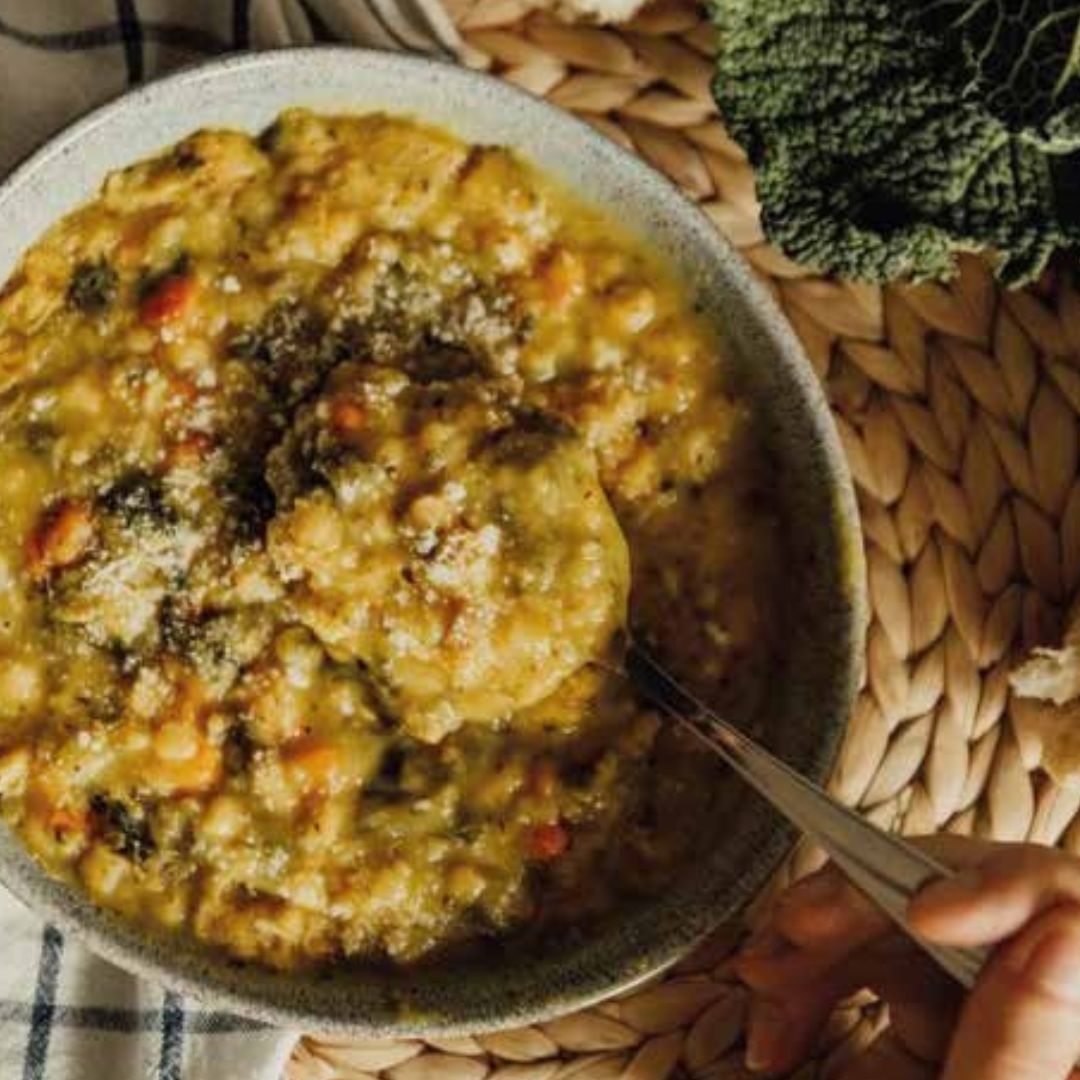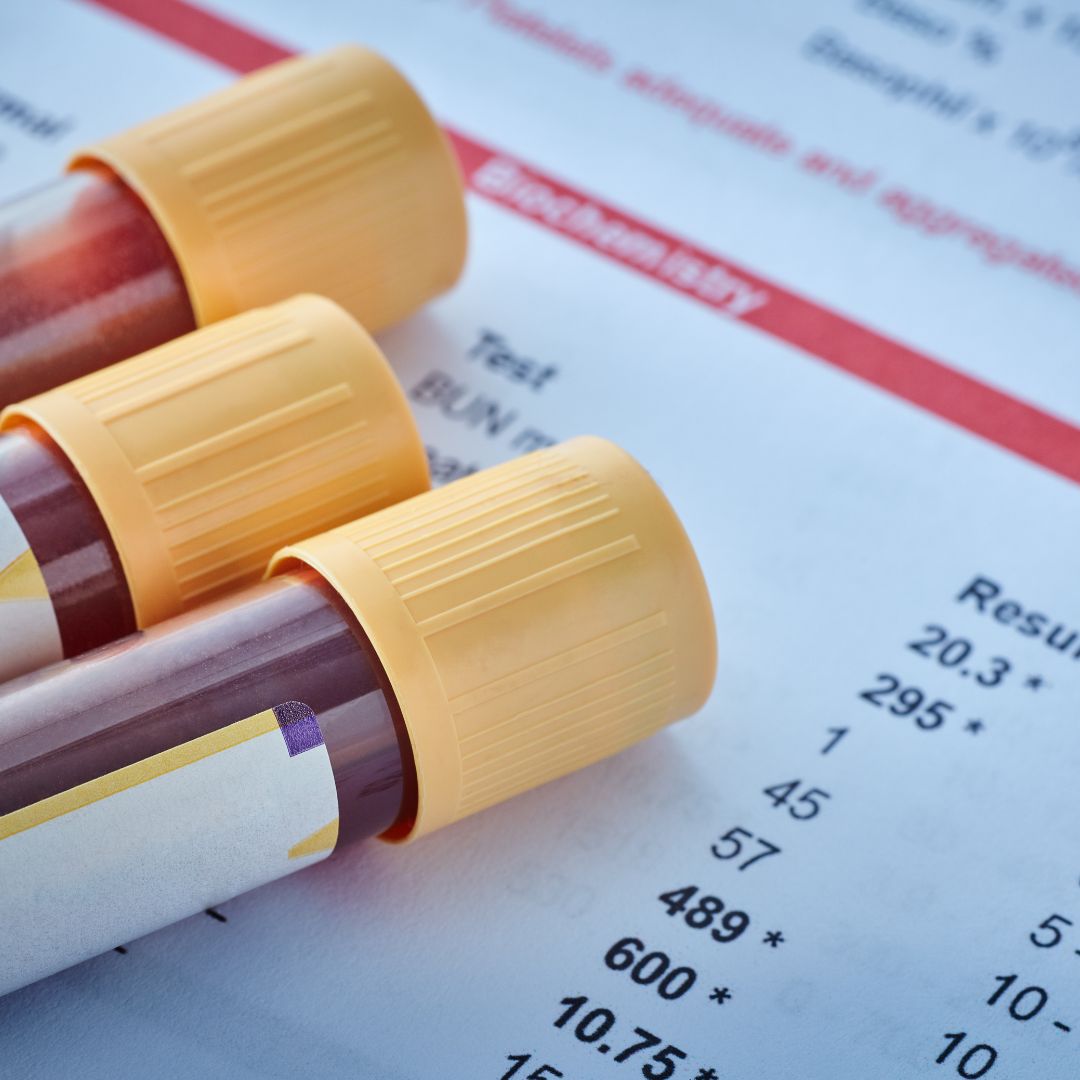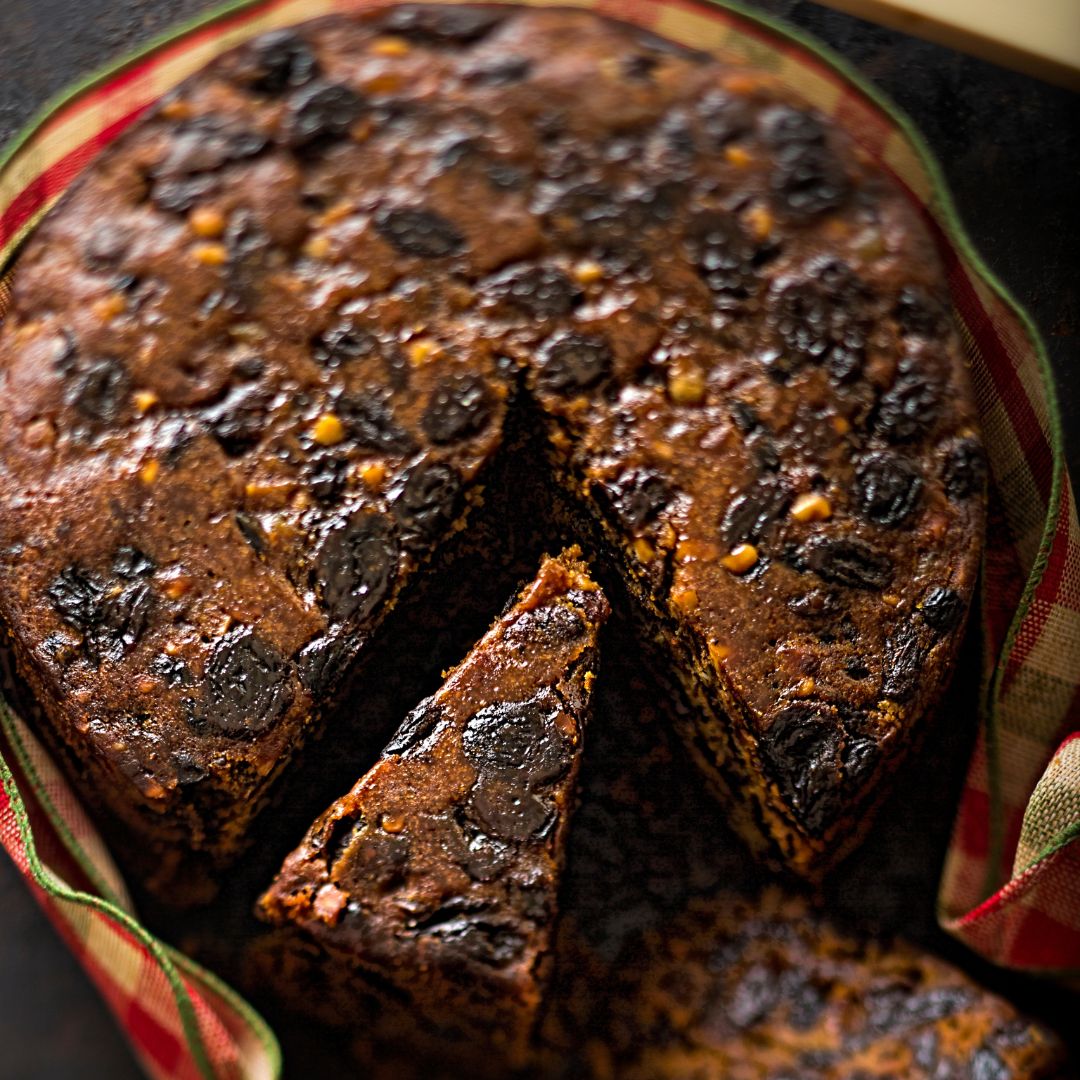
Everyday Lentil and Vegetable Soup
If you’re looking for the perfect batch cook recipe, here it is! You can make several portions in one go and pop them in the freezer for near-instant lunches.
Plus, this delicious, warming soup is perfect for the dreary January recipe.
Ingredients:
2 tbsp coconut oil
4 cloves garlic, crushed
2 shallots, diced
4 celery stalks, sliced
4 large carrots, sliced
2 litres vegetable stock (homemade or using 2 stock cubes)
4 sprigs rosemary or thyme
200g uncooked green lentils - rinsed and drained
160g kale, sliced
Black pepper
Fresh parsley, to serve (optional)
Method:

Why am I always hungry in Winter?
When winter hunger strikes, here’s how to stay satisfied and energised.
Ever feel like your appetite goes into overdrive the moment the temperature drops? Winter has this sneaky way of making you ravenous, and with the grey, drizzly weather and post-holiday slump, it’s tempting to hibernate with a blanket and a tray of biscuits.
But here’s the thing: there are ways to manage your hunger and keep your energy levels steady through January (without feeling deprived or miserable). So, let’s get into why your body craves more in the winter and how to keep yourself satisfied and energised with warming, nourishing comfort food.
The real reason you’re always hungry in winter
It’s not just your imagination—winter really does make you hungrier. Cold weather triggers your body’s need to stay warm, and your primitive instincts kick in, urging you to eat more to maintain body temperature.
Also, between the months of October and April it’s not possible to get vitamin D from the sun at the UK’s latitude. And low vitamin D levels can cause an increase in appetite because vitamin D helps regulate the hormone leptin, which signals feelings of fullness to the brain. This is thought to be an evolutionary method to get us to fill up on food to prepare for winter when food would be scarce.
But it’s not just physical. Shorter days and gloomy weather also play with your mind. Your serotonin levels (the feel-good hormone) can dip, leaving you craving comfort foods, especially those rich in carbs and sugar for a quick mood boost.
How to boost your energy with simple, satisfying swaps
The key to surviving winter hunger isn’t about willpower; it’s about making smart swaps that actually satisfy you and keep your energy levels up.
Here’s how to do it:
Warm comfort food that feels like a hug (but won’t wreck your waistline)
When you’re craving something warm and hearty, you don’t have to default to cheesy pasta bakes or greasy takeaways.
Here’s how to make comfort food that’s both delicious and nourishing:
Top tip: Embrace warming herbs and spices! Ginger, garlic, cumin, and cinnamon not only add heaps of flavour but also support digestion and boost circulation (keeping you toasty from the inside out).
Why hydration still matters in winter
It’s easy to forget about hydration when it’s cold, but staying hydrated is crucial for energy and overall wellbeing. Warm up with herbal teas or try hot water with a slice of lemon and fresh ginger for a cosy, hydrating alternative to plain water.
Remember: Dehydration can sometimes masquerade as hunger, so keep sipping throughout the day, even if you’re not feeling parched.
So, there you have it: the secrets to tackling that winter hunger while boosting your energy with simple, satisfying swaps and healthy comfort food. Which of these ideas are you most excited to try?
Message me and let me know! Or, if you’re feeling overwhelmed and need some personalised support to get through winter feeling your best, reach out—I’d love to help you. Just click the link here to book a free call.

What is Functional Testing?
Today I want to talk to you about something I am very passionate about - functional testing – because it may hold the key to solving your health problems and to staying healthier for longer. So, if your New Year’s resolution is to look after your health, read on!
Remember how detectives use clues to solve mysteries? Well, as your nutritional therapist, I'm like a health detective, and functional testing is my secret weapon for uncovering the root causes of your health concerns. No more wondering "why". These tests can help us unlock the "what" and build a personalised plan to help you feel better. There’s something very empowering, too, about having answers in black and white. And the tests I use are evidence-based and are performed by world-leading laboratories.
If you’re wondering, what exactly is functional testing, let me explain. Simply put, it's a way to go beyond traditional diagnostics and peek deeper into your body's inner workings.
We can assess things like:
Nutrient deficiencies: Are you missing out on essential vitamins and minerals?
Digestive health: What's behind your bloating or other digestive woes?
Food sensitivities: Is that afternoon fatigue or headache linked to hidden intolerances?
Inflammation levels: Is chronic inflammation silently impacting your wellbeing?
Hormonal imbalances: Are hormonal fluctuations causing unwanted symptoms?
Genetic testing: how are your genes affecting how you feel?
By understanding these deeper factors, we can create a roadmap to address them, not just manage symptoms. There’s so much information available to us as practitioners these days, all of which enables me to provide a bespoke programme for my clients because I truly understand their health.
Sadly, many of the tests I run are not available on the NHS, which means that to access the information, you have to pay. Since you are reading this, I know how much you care about your health and it might be worth thinking about.
So, let’s talk about why are functional tests a good investment in your health?
Here are 5 compelling reasons:
I specialise in gut and hormone health, so there are three tests that I regularly use with clients:
Comprehensive stool tests:
A Comprehensive Stool Test can help to uncover underlying causes of conditions such as irritable bowel syndrome (IBS), chronic diarrhoea, or constipation by assessing gut bacteria, inflammation, and digestive function.
It can also provide crucial insights for clients experiencing symptoms like bloating, fatigue, skin issues, or food intolerances, enabling me to put together a tailored plan to address these concerns effectively.
DUTCH test for hormones:
A DUTCH (Dried Urine Test for Comprehensive Hormones) test provides a detailed analysis of hormone levels and their metabolites, offering insights into conditions such as hormonal imbalances, adrenal fatigue, perimenopausal symptoms, or polycystic ovary syndrome (PCOS).
It is particularly beneficial for clients experiencing symptoms like irregular periods, mood swings, low energy, poor sleep, or unexplained weight changes, allowing us to put together personalised strategies to restore hormonal harmony.
Nutrigenomic testing:
Nutrigenomic testing with LifeCode GX reveals how your genes influence critical areas like food tolerances, detoxification, vitamin needs, and metabolic health, empowering personalised nutrition and lifestyle choices. With a simple cheek swab and expert guidance, this test provides actionable insights to optimise well-being and prevent potential health challenges.
Ready to unlock your health potential? Let's talk! I'm here to answer any questions and guide you through the process of functional testing. Just click here to book a free call.

WHAT DOES A NUTRITIONIST DO EXACTLY?
Most people get – on a conceptual level at least – that they should probably eat a bit better than they do, they should probably move more and take the time for more ‘me time’ to live a long and happy life.
‘Life’ seems to get in the way of achieving that. Many of us are juggling jobs and the complexities of modern relationships, leaving little time to dedicate to the business of ‘being healthy’. Convenience often wins. It’s not that that’s wrong per se, but here’s the thing: all the time we are not eating or moving or living as well as we know to do, we are silently getting sicker. That may actually be going-to-hospital sick or it may just mean having health niggles that bother us greatly but that we have learned to cope with. I’m talking here about things like IBS or other tummy troubles, PCOS, perimenopause, PMT, arthritis, stress or anxiety, haywire hormones, or possibly weight that has crept on over the years and you can’t seem to shift it, no matter what you try.
What I want to share with you today is that the food you eat matters more than you can possibly imagine. And that, in many cases, simply by making changes to your diet, the symptoms of some of these conditions can be improved so markedly that there is a really profound shift in how you experience life.
WHAT IS NUTRITIONAL THERAPY?
Nutritional therapy used to be referred to dismissively as ‘alternative medicine’, but what we really use is Functional Medicine. It’s only now that the science of what to eat is getting the recognition it deserves and is being actively promoted by a small number of well-known and recently enlightened medical doctors, like Dr Rangan Chatterjee and Dr Michael Mosely.
Essentially, we nutritional therapists apply the latest hypotheses and research in nutrition and health sciences to you and your symptoms, testing where necessary, and we come up with a diet, lifestyle and (sometimes) supplement plan to support those needs. We might also bring in some coaching to help you put the ideas into practice in a meaningful way or break through whatever barriers have held you back in the past.
PERSONAL SERVICE
It’s a very personal approach. You might hear practitioners talk about people being ‘biochemically unique’. That means that there isn’t a single way of eating that is right for everyone. Sandra might have PMS and you want to lose weight, for example. Sandra might have a history of antibiotic use, while you had your appendix out when you were 14. Sandra might have an intolerance to dairy, while you hate strawberries. I could go on, but you can imagine the thousands of different permutations here. And the fact is that your DNA, previous medical history, and any current symptoms as well as what you like and don’t like, not to mention your personal circumstances are all important when a nutritionist creates a plan for you.
It is personalised just for you. That takes both time and skill. You could download something from the internet – if you knew what you were looking for – but it is not the same.
A nutrition practitioner may also work with supplements targeted to a specific condition or your own health goal. This can be a minefield – potentially dangerous and inevitably costly – if you don’t know what you’re doing.
WHY DOESN'T EVERYONE SEE A NUTRITIONIST IF THE RESULTS ARE SO GOOD?
It’s unfortunate that so many people don’t understand what a huge effect a personalised food and lifestyle programme can have on the symptoms they have or how they experience their life.
Newspapers are full of soundbites about the latest foods, but they don’t really join the dots, and it’s difficult to see what might be possible for you. The vast majority of doctors – even those being trained today – have next to no current knowledge or practical experience of what their patients should be eating or how they might integrate the theory into their lives. They live in a world, by and large, where the solution presented during your 10-minute session lies in a prescription.
Some – like Chatterjee – are taking on training in something much bigger called Functional Medicine. This is a framework for considering that the symptoms you are experiencing are a result of imbalances in your body and, rather than treat the specific symptoms themselves, nutrition professionals try to understand the root cause of the problem and base their programme around that.
WHAT HAPPENS IN A NUTRITION CONSULTATION?
Your first consultation will last up to 90 minutes. You will have been asked to complete and send back a nutritional therapy questionnaire before you visit. During the session, we’ll go into your medical history, your health goals and any other challenges you’re facing, what you generally eat, what you like to eat, what you hate to eat and how you have to eat (on the bus, in a rush at your desk, and so on). There’s no judgement and anything you share with me is kept in confidence.
My nutritional therapy sessions are provided in programmes that run over 12 weeks. This is because it is rarely helpful for anyone to leave without the knowledge that they have several more sessions in place to help them implement the programme, make changes at a pace that suits them, and to deal with any challenges or questions that come up along the way.
WHAT IF I ALREADY KNOW WHAT TO DO?
Knowing what you should be doing is only part of the problem if you are unhappy with an aspect of your health. Staying motivated is the hardest part of any plan. The single best way to stay in the zone is to have a buddy or coach who can give you a nudge or call you out if you start to go off piste. I’d say this is the single biggest thing that makes the difference between reaching your goal and actually staying there. That’s where health coaching comes in. It keeps you accountable will ensure all that good work doesn’t go to waste.
If you'd like to find out more, why don't you book in a free 30-minute health review. We can talk about what's going on for you, what you've tried before, and I can give you some simple tips to get you feeling better right away. Simply click here to book.

How does a nutritionist tackle Christmas?
Christmas doesn’t have to be a dance between deprivation and over-indulgence. It’s a question of balance. It’s a question of figuring what matters most. What are the must-haves and must-dos this year, and what are the might-as-wells (even though you’re not that fussed)?
Plus, there are several things going on when it comes to food and drink. Your fear of ‘missing out’ on that delicious dessert is the first. But also refusing food is mired in emotional meaning both for you and for the host.
As a Registered Nutritionist, I help my clients tackle this tricky period. And here are my top 10 fundamentals for enjoying the festive season – but not regretting it in January:
Set a maintenance goal instead. This is more realistic and much more achievable. This will give you the freedom to enjoy yourself without the feelings of deprivation or the pressure to rebel...
Low carb is not the same as ‘diet food’. Hosts will love you contributing, and no one need know you are also taking care of your health.
However, make sure you don’t forget about yourself and still take the time to plan your food. That way, you will still have the right choices in the house, and it will be much easier for you to succeed. If you have a specific health goal, it is a shame to fail just because you don't have the right foods to hand. This is so easy to avoid just by giving it a few minutes’ thought and preparation.
If you do, if will be harder to make healthy choices.
Avoid creamy or sweet drinks. Try to drink with food as this will reduce the impact of alcohol (and sugar) on your blood stream.
If your usual classes aren’t running, choose other options instead e.g. brisk walks with friends and family.
If you do happen to overindulge, enjoy whatever you are indulging in and get back on track afterwards.
This will encourage you not to overeat and will also improve how you feel the next day.
Particularly fast-release carbohydrates like starchy carbs and sugar.

Low Carb Christmas Cake
This cake was devised for Christmas cake lovers who don't want to upset their energy balance - traditional cake is very heavy on dried fruit.
Note that because the cake has a low sugar and alcohol content, it will not keep for more than a week but can be frozen.
Ingredients
Method:
![]()
Please get in touch and find out more - I offer a free 30-minute exploratory call.